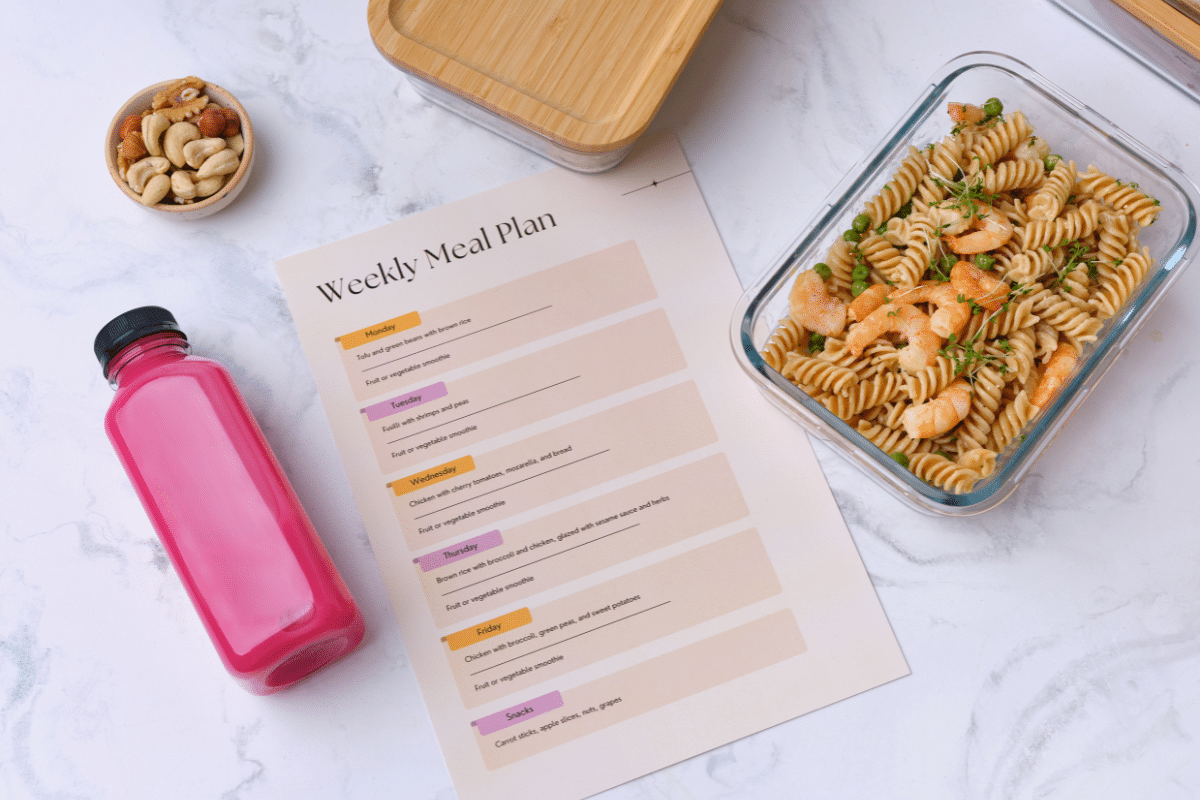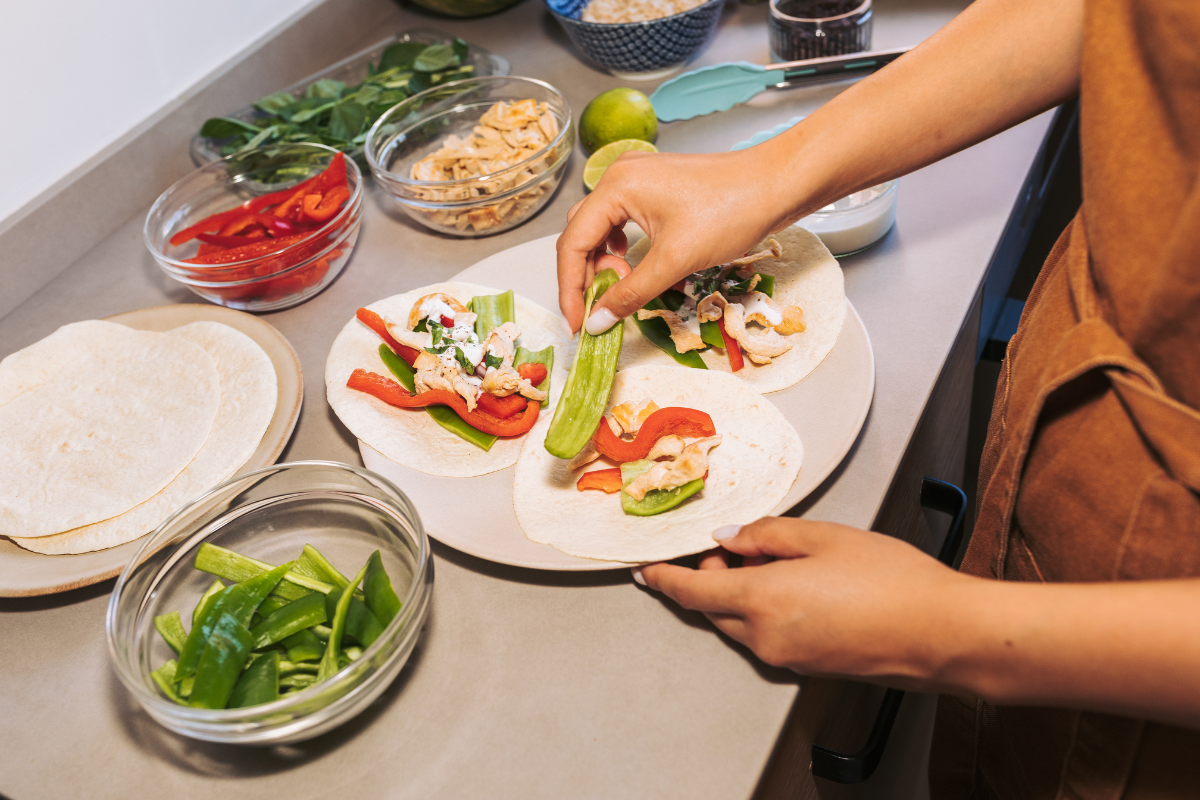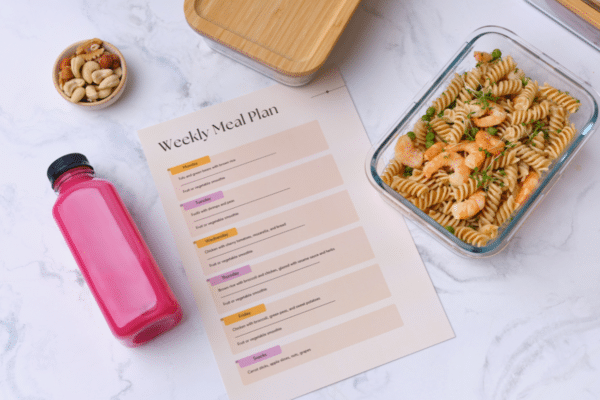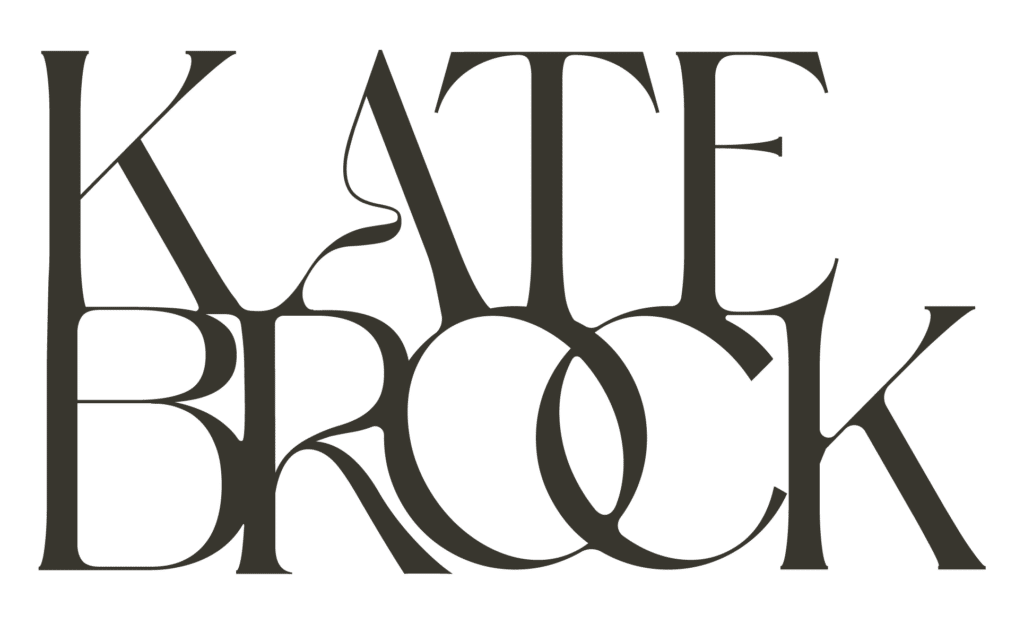Practicing intuitive eating and listening to your hunger cues are some of the primary focuses of our work with our clients here at Kate Brock Nutrition.
If you constantly worry about what, when, and how much to eat, feel anxious in social situations involving food, or struggle with body image, using different intuitive eating skills, like paying attention to hunger cues could be a game changer for you.
Keep reading to learn more about all the benefits of tuning into your body.

Benefits of Intuitive Eating
Embracing intuitive eating involves releasing a certain level of control that many of us who’ve struggled through diet culture, poor relationships with food, and body image issues like to maintain. Letting go of calorie counting and criticism is ultimately about learning to trust your body.
The benefits of intuitive eating are not only physical but mental/emotional as well. They include (but aren’t limited to)…
- Better nutrition (more vitamins/minerals getting into your body)
- Increased energy
- Improved metabolism
- Decreased digestive health issues
- A better relationship with food and eating
- A more positive body image
- Reduced stress and anxiety surrounding eating and situations involving food
Intuitive eating tells you what to eat.
Intuitive eating is about deciding what to eat based on how it tastes and how it makes you feel. This means listening to how your body feels before, during, and after eating something. Are you unexcited by the idea of eating another salad but salivating over an image of your favorite pasta dish? An important piece of intuitive eating is to unlearn the idea that there are good and bad foods. So, eat the pasta! Food should be enjoyable, and intuitive eating involves listening to cravings and paying close attention to how certain foods make you feel.
Let’s say you do eat the pasta and feel queasy or bogged down afterward. Those are great things to note. The next time you’re craving pasta, you could try a different recipe or add ingredients that boost your energy instead of draining it. Alternatively, it might be a sign to eat a smaller portion next time, which brings us to…
Intuitive eating tells you how much to eat.
Since intuitive eating is about listening to our bodies and how certain foods make us feel, it’s worth paying attention to if you tend to eat too little or too much at mealtime. Like the example of the pasta, there is nothing wrong with the food itself, but if you’re feeling very full, tired, and foggy after eating, it may be a sign of overeating and ignoring fullness cues (more on those later!).
On the other hand, if you eat a bit of that pasta dish and tell yourself “OK, that’s enough,” but your stomach is still grumbling and you’re not anywhere near feeling full? That means you are undereating. Striking that perfect balance can happen only when you learn how to pay attention to your hunger cues.

Understanding Hunger Cues
Keep in mind that intuitive eating is about listening to your body over your mind when it comes to deciding when, what, and how much to eat. Are you certain that you’re able to identify when you’re physically hungry? I know it sounds silly, but it can be easy to overlook while going about your busy daily routine. Some physical hunger cues include…
- irritability
- stomach grumbling
- feeling tired
- difficulty concentrating
- nausea
- dizziness
- shakiness
- headache
These cues start mildly, as they’re your body nudging your brain to tell you “Hey, it might be time to eat soon.” Hunger cues ramp up as they’re ignored, going from some mild irritability and stomach grumbling to dizziness and shakiness as your body tells you more aggressively “It’s time to eat now!” It’s your body being your friend, and respecting those hunger cues by eating something is the best way to respond.

How to Tune Into Your Hunger Cues
If you have a history of restriction, it can be hard to tune into hunger cues. If you’re currently struggling with a lot of restrictions, it will be necessary to eat more on a schedule so you can ensure you are getting enough, but then you can start to transition to more of an intuitive approach once hunger signals start to come back!
How do you do that? Check-in with your body to see what you’re truly needing!
Several times throughout the day, pause and take note of whether or not you’re experiencing any of the previously mentioned physical hunger cues. Think of it as a small meditation, since it’s so common we overlook how we physically feel as we move through the hustle and bustle of the day.
Feeling shaky and having trouble concentrating between breakfast and lunch? Grab a snack! Stomach grumbling after dinner even though you’ve told yourself you’re “not supposed to” eat anymore before bed? Eat something to curb that feeling so that you don’t have trouble getting to sleep, which is a likely possibility if you’re going to bed hungry.
As long as what you’re eating makes you feel good (remember: you can take note of how different foods/dishes make you feel physically before, during, and after eating them to keep in mind for next time), you don’t have to ever feel guilty for responding appropriately to your hunger cues!

The Role of Fullness and Satisfaction
Perhaps you’ve gotten hunger cues down and haven’t considered fullness cues. Intuitive eating is not just about knowing when to eat; it’s also about knowing when to stop eating. I know this topic can feel sensitive, especially if you have a history of being restrictive when it comes to portion control. Keep in mind that this isn’t about shaming yourself over how much you’ve eaten – it’s about simply recognizing how you feel after eating and responding to that information.
Here are some physical fullness cues to look out for:
- your mood has improved
- your concentration has improved
- your stomach starts to feel tight
- food becomes less appetizing and you have a feeling of satisfaction
Overeating might leave you feeling nauseous, sluggish, and guilty. Undereating might leave you feeling unsatisfied, and irritable, and can even lead to binging (You read that right; read a little more about how restricting and binging go hand in hand in my previous blog on intuitive eating here). Find that perfect zone of fullness and satisfaction after each meal by checking in with your body for those fullness cues.

Final Thoughts: Hunger Cues and Intuitive Eating
We hope that you found this guide on hunger cues and intuitive eating helpful.
If you’re ready to take the next step in building a healthier relationship with food, we’d love to support you. We are a team of nutritionists in Washington, DC who are committed to helping you find food freedom – whether you’re looking for guidance in eating disorder recovery or if you want to navigate gut health without a side of diet culture. Learn more about the services we offer here or you can book a complimentary inquiry call with us here.
Read these next:
Benefits of Working with a Nutritionist in Washington DC That Accepts Insurance
The Ultimate Guide to Working With An Out-Of-Network Dietitian



